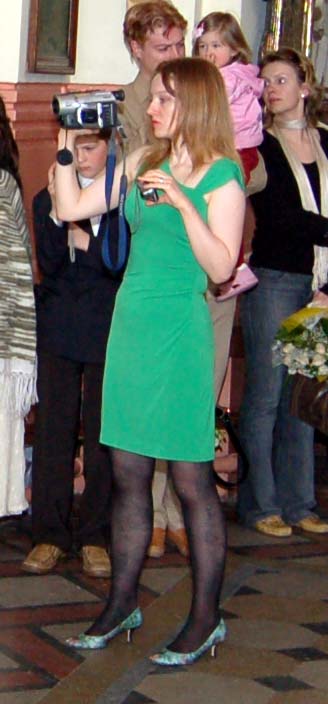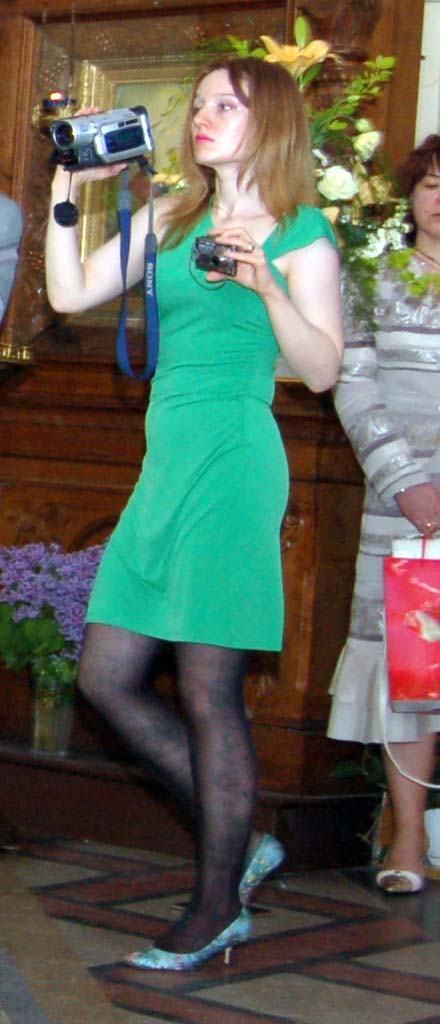My sister’s wedding, May 2006

My sister’s wedding took place in a Russian Orthodox church of Our Lady of the Sign. Its full name, translated from Russian, would be something more like “Church of the icon of The Sign of the Most Holy Mother of God, Pure Virgin Mary.” It is named in honor of a famous medieval icon, “The Sign” (Znameniye), to which many miracles were attributed.
I never quite understood why my sister and her husband picked this church for their wedding, considering that our family is neither Russian nor Orthodox (we are Lithuanians). So I assumed that it was her husband’s wish, since he is ethnically Russian, but then I found out it was actually her wish. She just really liked the church. However, you can’t get married in a church without professing the religion practiced in that church, so my sister and her fiance were required to accept several sacraments according to Russian Orthodox rites.
M and P center pose with some of their relatives and friends outside the church before the wedding.

My sister’s best friend L, her significant other A and their 2-year-old daughter A.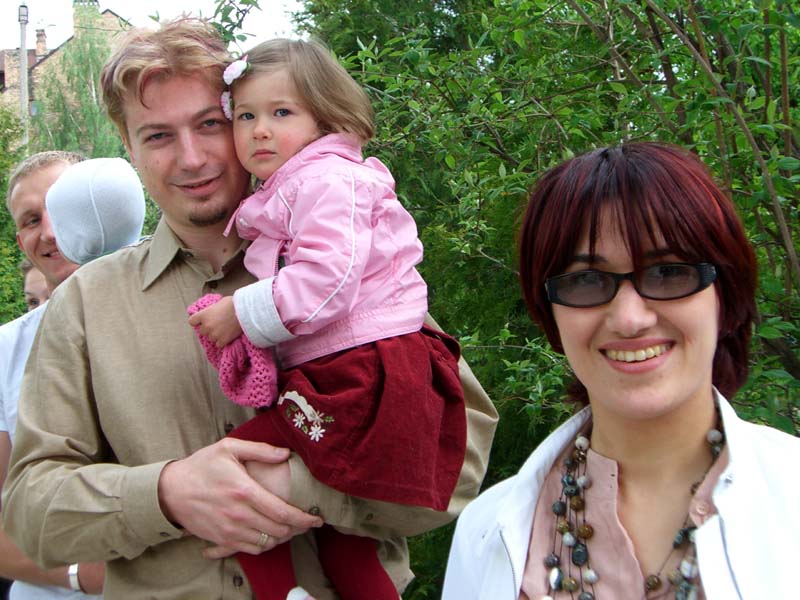
P and M greet their friend Kevin outside the church. He is an American who P met years ago (I’m not sure how), and even went to the US to visit him in December 2005.
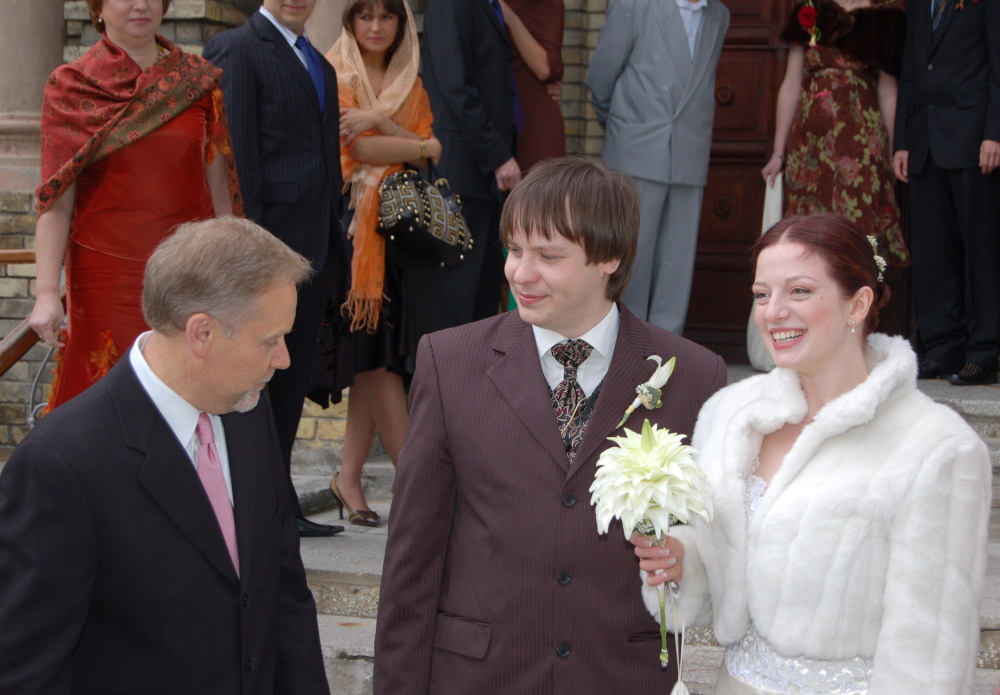
P, M, P’s American friend Kevin to the left of him, and others in front of the church

P, M, and their witnesses E and E enter the church. Over her white bridal dress, my sister wore a white fur crop jacket, perhaps because the church does not permit bare shoulders, or maybe also because May in Lithuania can be pretty chilly.
Many of the pictures below were taken not by me, but by one of groom’s friends, whose name I unfortunately didn’t write down, as much as I would like to give him credit.
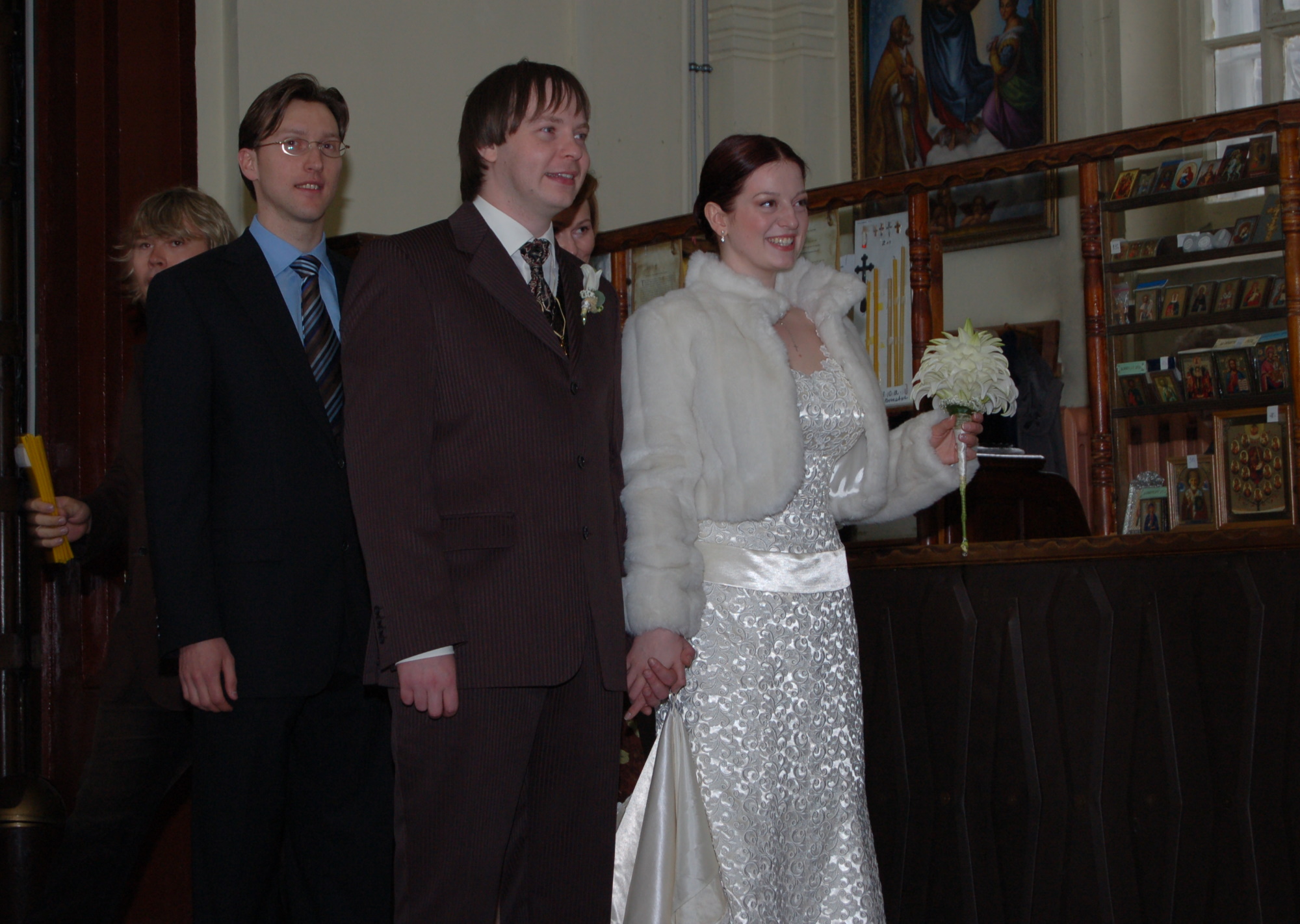
A multitude of arches in the ceiling of the Church of Our Lady of the Sign
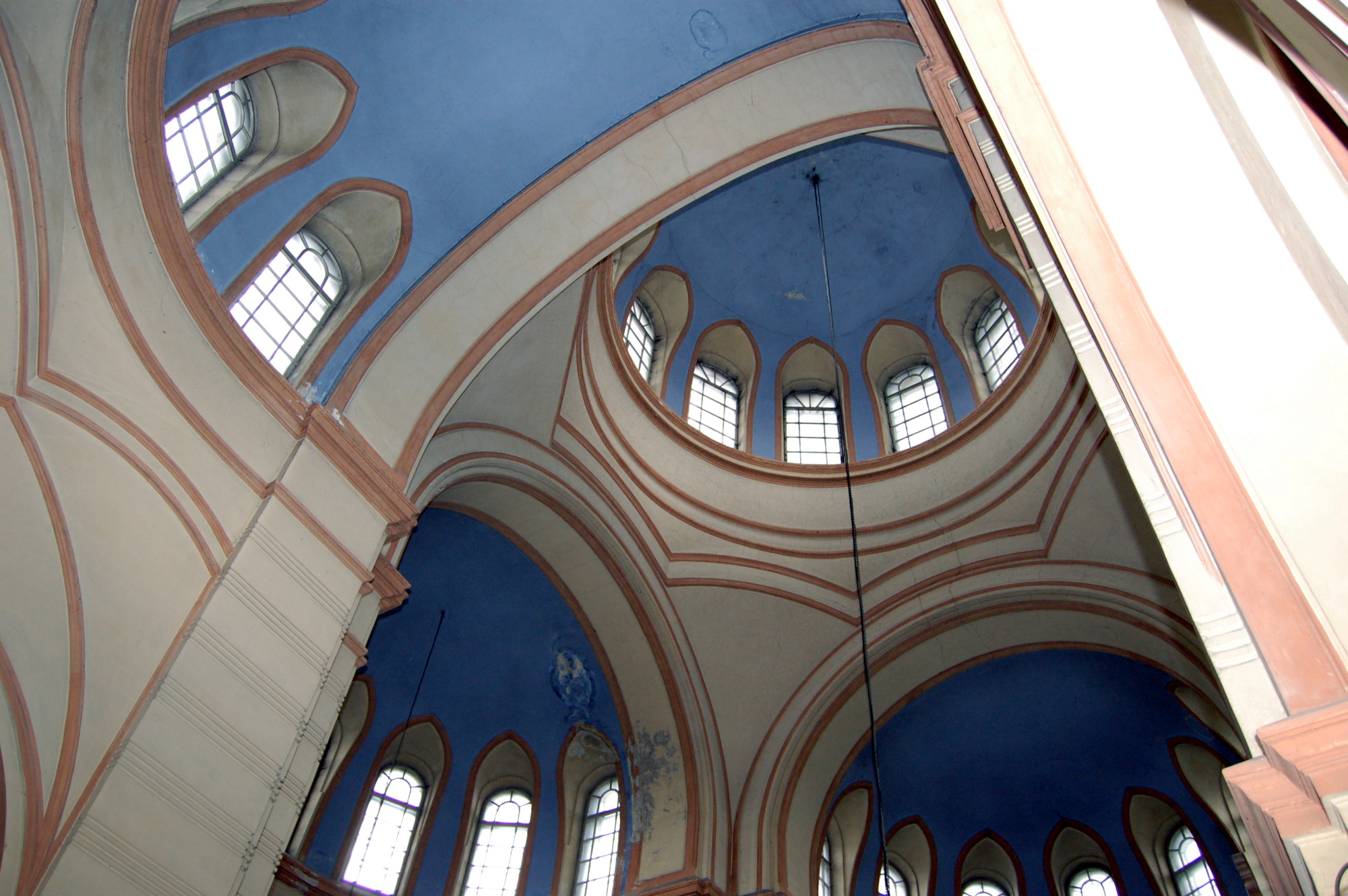
The priest leads P, M, and their witnesses towards the center of the church, where he will perform the ceremony of marriage.

The priest bows before the altar. The wedding guests are all standing around the edges of the room. This isn’t the kind of church where people sit in the pews and watch the ceremony.

The priest *does something* with the candle in M’s hand. And by “does something” I mean I’m not sure what he did except perhaps transfer it from her right hand to her left hand. I don’t know if there is any ritual significance to it, or if it is merely to free up her right hand for putting a ring on it. (In Europe, it is customary to wear the wedding ring on the right hand.)

The priest puts rings on the bride’s and groom’s hands

The priest puts a ring on the M’s hand

The priest leads the bride, the groom, and the witnesses towards the altar. The procession is preceded by a woman holding a huge candleholder with a candle. I’m not sure what her role in the ceremony is, but I don’t think she was a close relative of anyone in the wedding party. Perhaps she holds some kind of office in the church and assists with the ceremonies.

The priest then turns towards the bride and the groom, and reads from — presumably — the scripture. But seeing how the couple and the witnesses are laughing, you have to wonder if he threw in some jokes.
In the background there’s my and M’s mom and dad, watching.
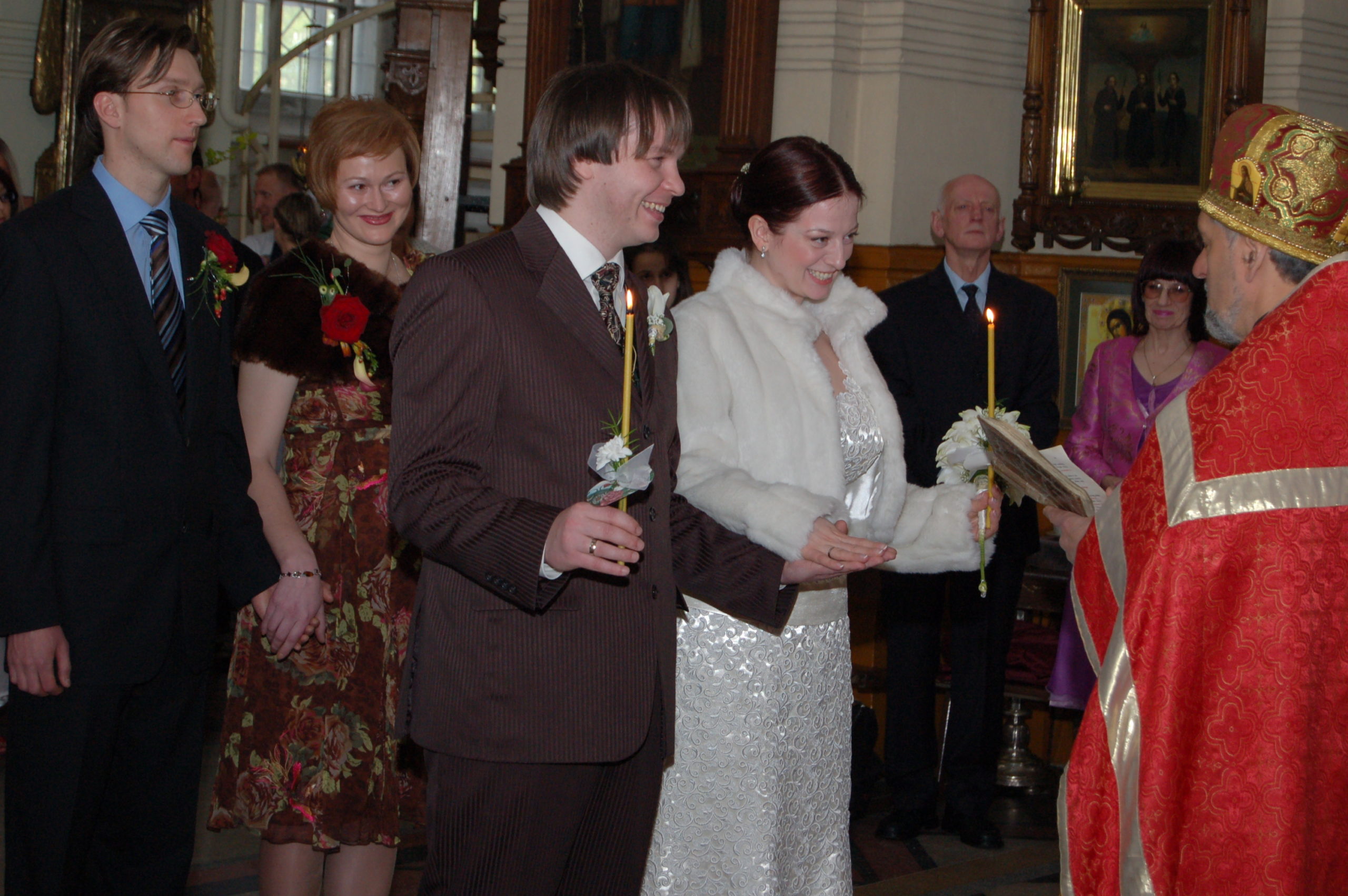
The newlyweds are standing at the altar, with the witnesses behind them. This is what the whole church looked like. The guests are standing around the sides, and that’s me in a green dress filming the ceremony. In addition to taking pictures, I was also making a video with an honest-to-goodness video camera (this was before smartphones). A bit too conspicuously, perhaps, but there was no official videographer or photographer, and I was trying to get some good shots.
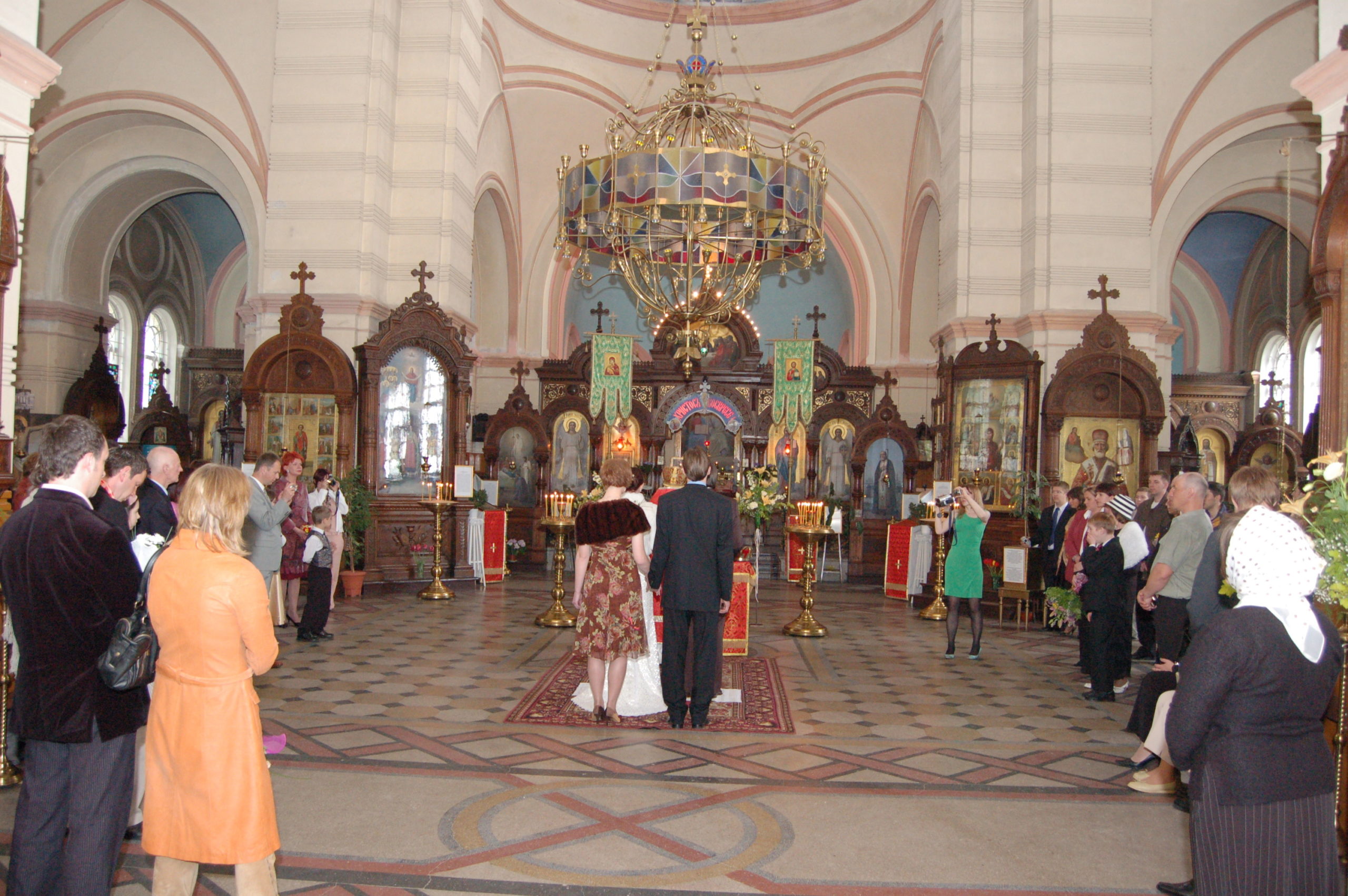
After more reading and liturgy, and after the couple says “I do”, comes the part where the priest puts crowns on the newlyweds’ heads. That’s the moment at which the couple is considered married. The priest explained that these crowns are an imitation of, or symbolic of, a tzar’s crown. Even the word for wedding in the liturgical language of Russian Orthodox church literally means “crowning”.


Now M and P are crowned. I like the priest’s pose in this picture. He throws out his hands: that’s it, guys! I’m done! Whatever!

The priest gives groom and bride a sip of ceremonial wine

As the final part of the wedding ceremony, the priest leads the bride and the groom in a walk around the altar. M is carrying the candles, whereas P is carrying the priest’s ceremonial cloth. They walk around the altar four times. The priest mentions that this is the same ritual as performed when a man becomes a priest. Just like a couple is married to each other, a priest is married to the church.

Then the priest gives each of the newlyweds an icon (a sacred picture): Virgin Mary with the baby to M, and Jesus to P.
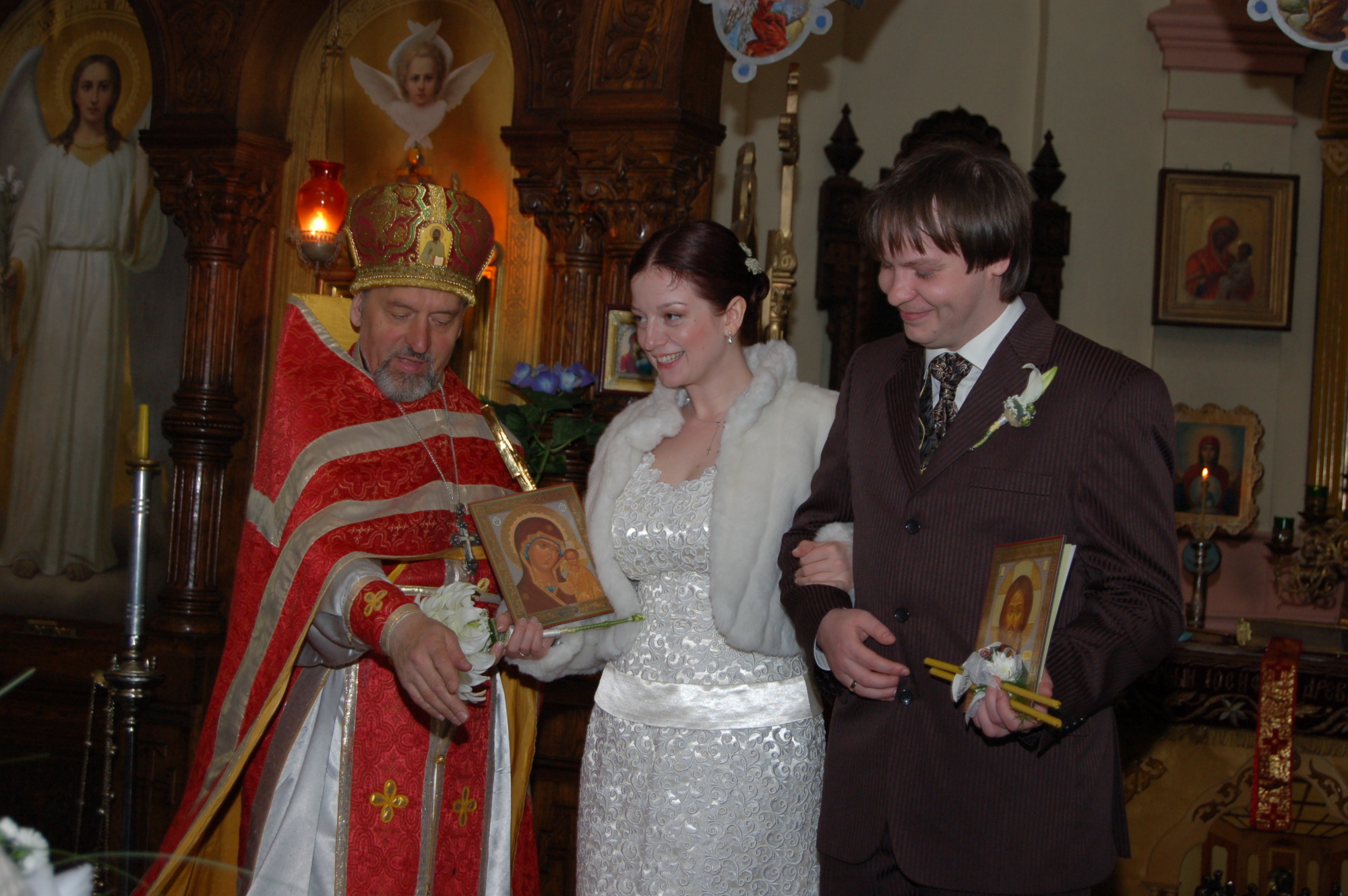
The couple turns around and faces the audience for the first time as a husband and wife. The guy on the right is one of the witnesses, P’s friend E. The sign above their heads says “Christ has risen”.
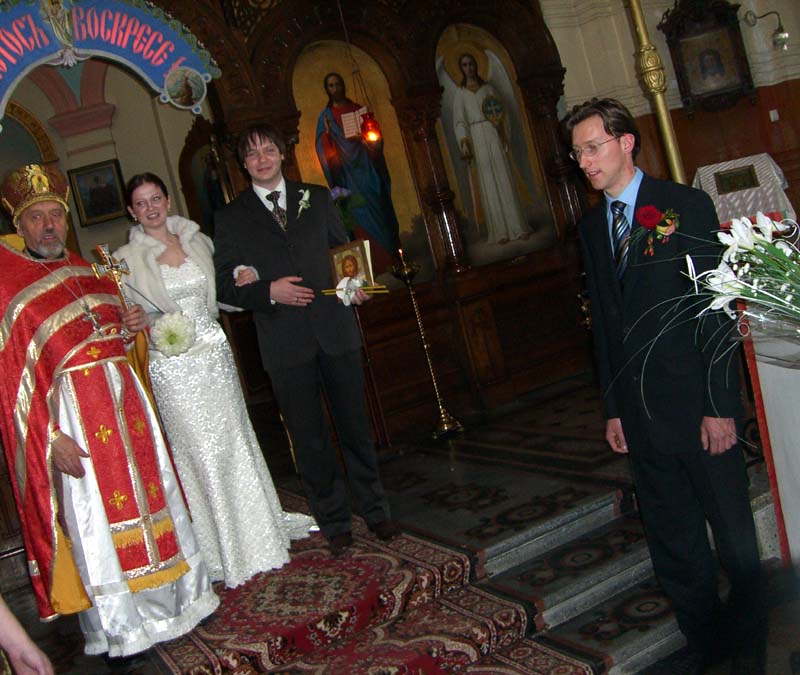
Wedding is over — it’s time for the newlyweds to receive congratulations! My and M’s mom and dad embrace M and P.
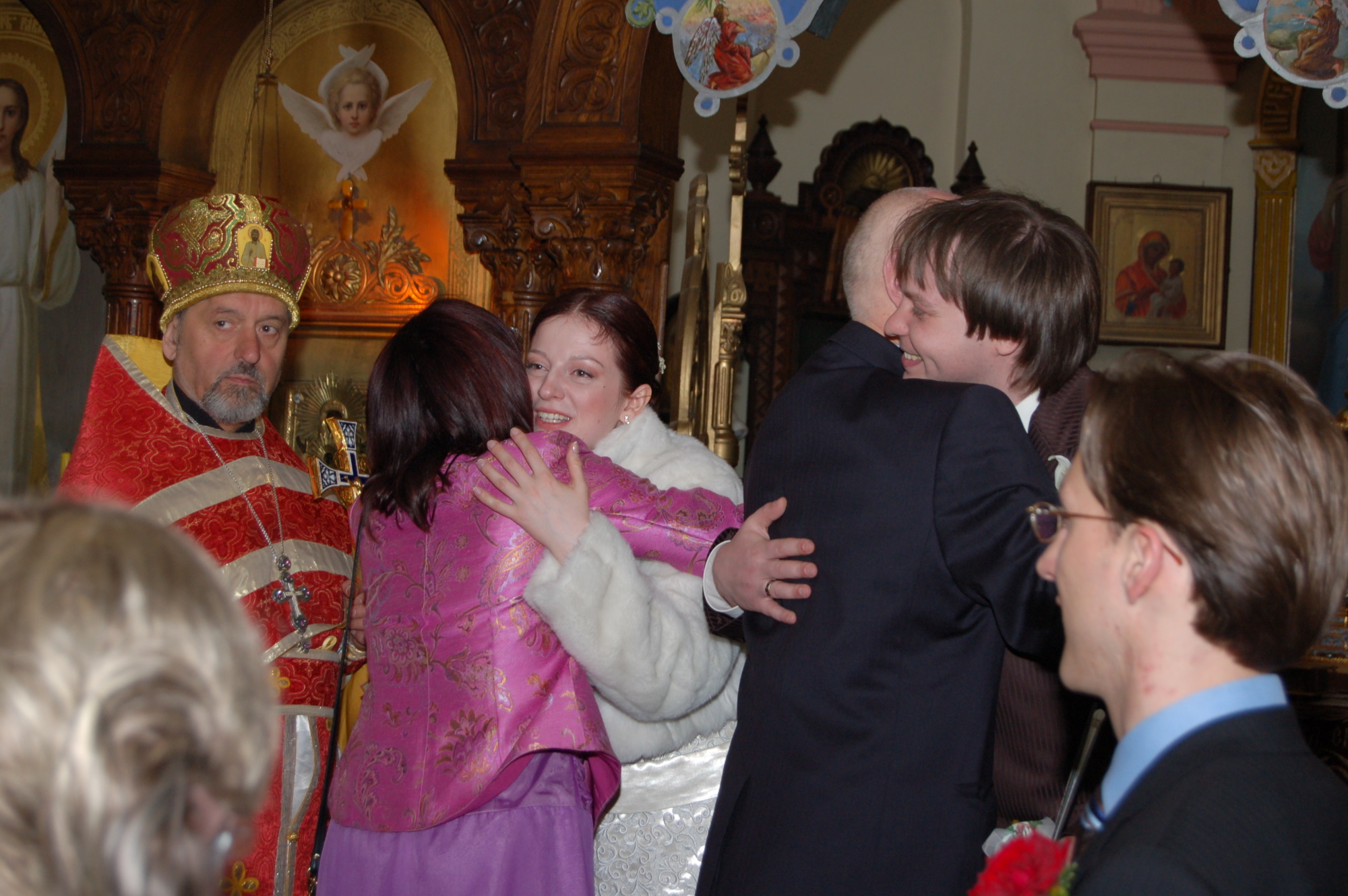
Oh no, there is more ceremonial walking! The priest gives the mothers of groom and bride icons — a picture of Jesus to my and M’s mom, and a picture of Virgin Mary to P’s mom — and asks the mothers lead the newlyweds out of the church. This is symbolic of mothers’ providing guidance to their children throughout their lives.
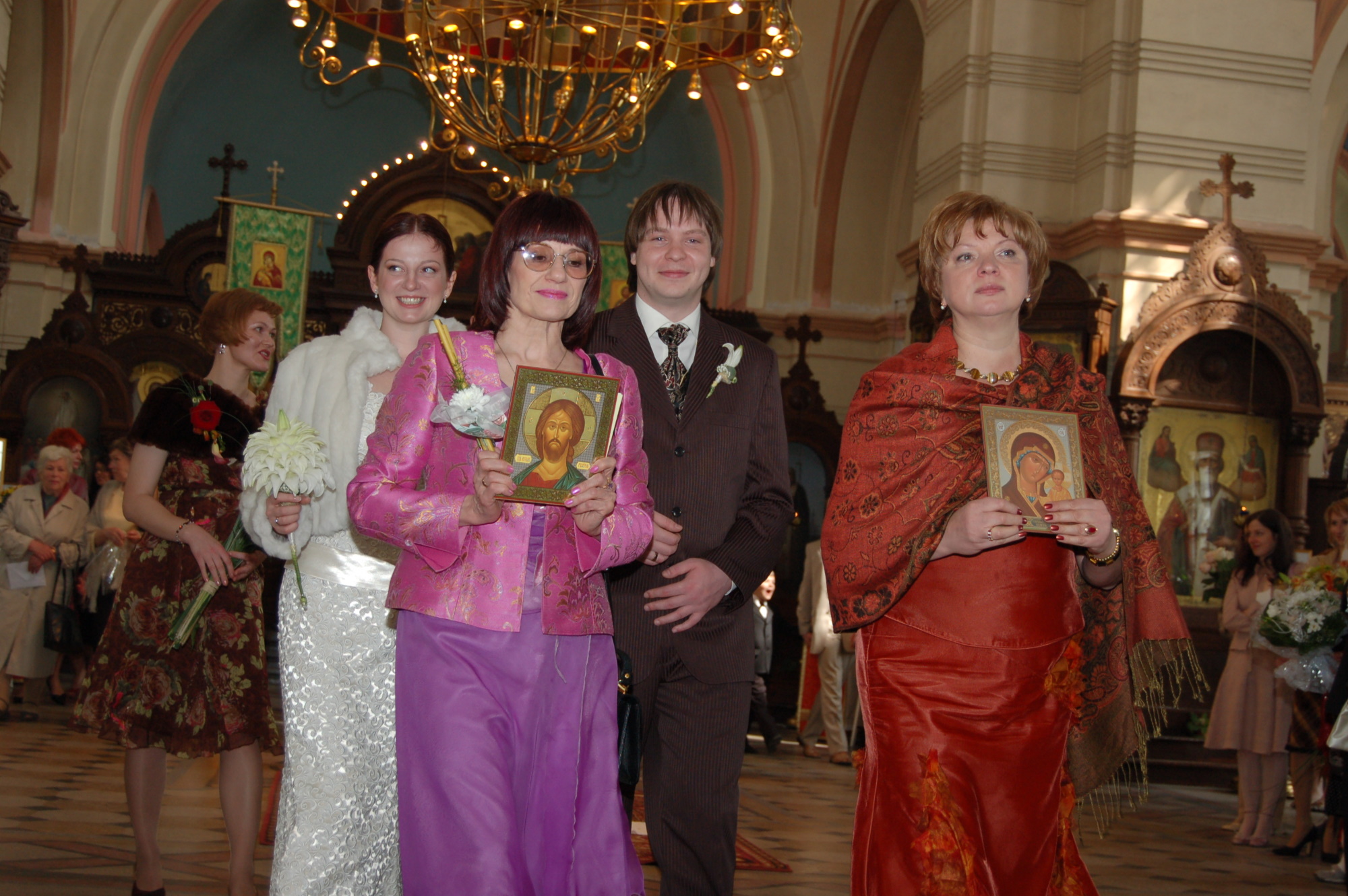
I was filming the wedding ceremony with one hand, taking pictures with the other.
